With globalisation, Indian artforms have developed a wider audience base. Larger auditoriums, increased travel, and more number of concerts have led to rethink of construction of many traditional instruments. Portability and durability became key. Such practical needs coupled with a desire to come up with unique sounds prompted several innovations in Indian musical instruments.
The traditional Saraswati veena is large, fragile, temperature sensitive and feeble in amplitude. Radel was one of the first to innovate here, coming up with several models — an Electric Veena in 1971 with fixed frets, guitar tuning keys and magnetic pick-up; then an Electronic Veena with adjustable frets, a built-in tanpura, electronic amplifier with speaker and battery back-up; and later, a Digital Veena using sampled sound that automatically tunes all strings at the touch of a button to desired pitch. All these veenas could be carried in two bags — fret board in one and gourds in the other.
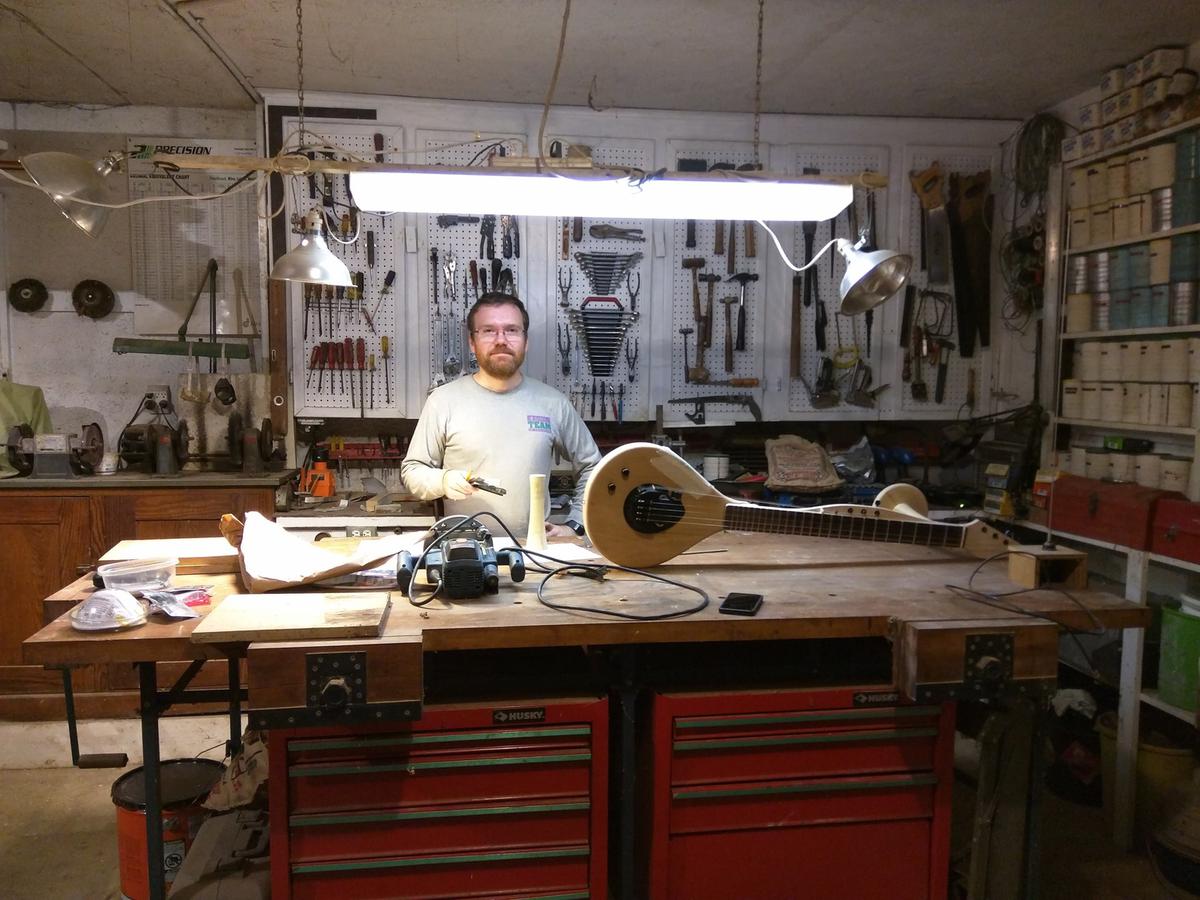
Denis Petrov of New York created Shiva Veena.
| Photo Credit:
Courtesy: shivaveena.com
Facing several broken veenas on international travel, Suma Sudhindra came up with the Tarangini Veena using guitar frets. Initially, it required two bags, but now fits in a standard guitar case. Denis Petrov of New York saw his vainika-wife, Vijaya Krishnamurthy, struggle with the instrument’s many issues. He designed the modular and light weight Shiva Veena that could fit entirely in a standard guitar case. It has pick-up mics designed specifically for the veena including for the sympathetic strings and bridges adjustable for each string. It uses a guitar fretboard and easily available guitar strings. Senior vainika Naresh Purushotham, student of S. Ramanathan, says that string changes are a breeze and the Shiva Veena’s fret pitch accuracy is so good that he can play some chords on it vertically and with a much lighter touch.
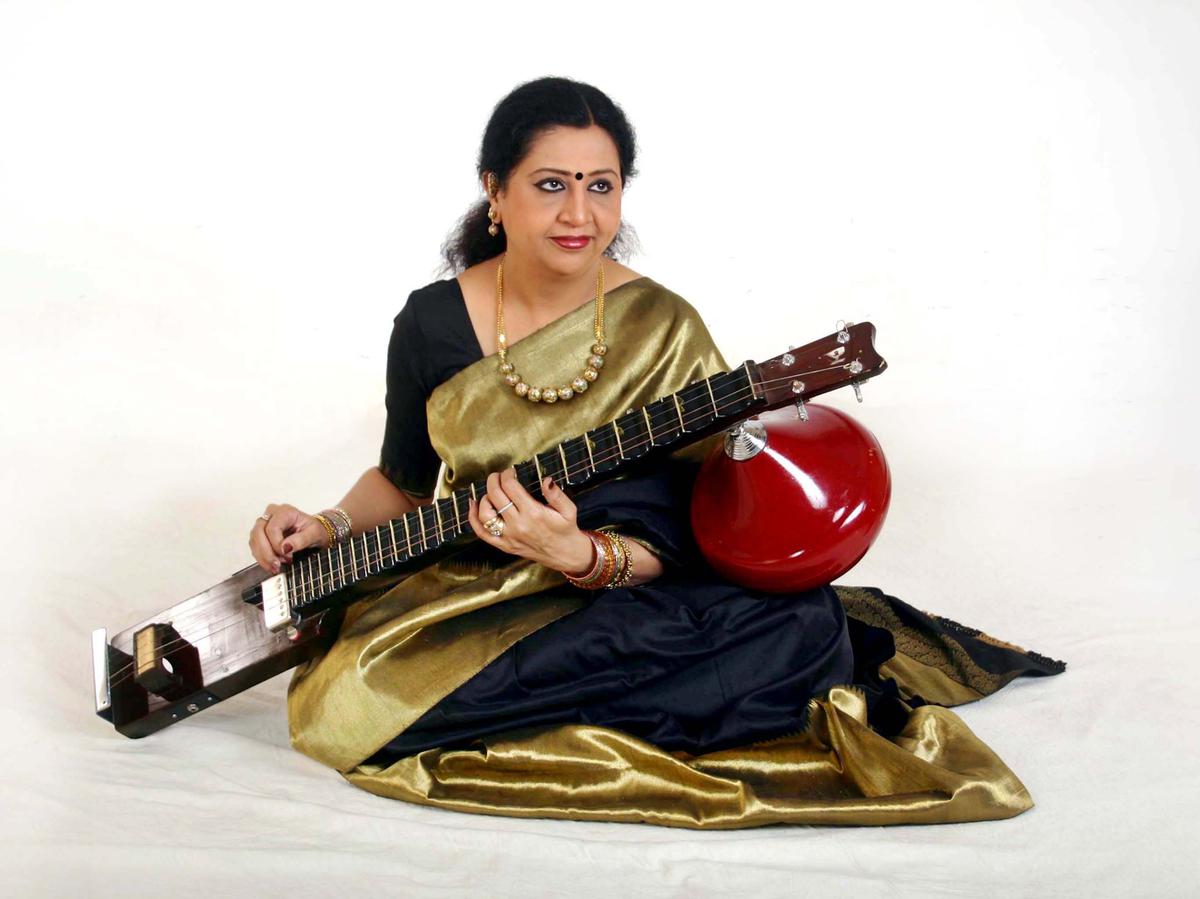
Suma Sudheendra with Tarangini Veena.
| Photo Credit:
Special Arrangement
V. Balachandhran, father of young vainika Ramana Balachandhran, has done enough research on the veena. He has tried innumerable permutations and combinations of old and new materials for every part of the veena. Balachandhran feels that the instrument’s multiple inherent issues have stagnated its evolution in the modern era. He says he has achieved a 10db increase in amplitude purely through material and construction changes. He hopes to come up with a significantly improved veena for Ramana later this year.
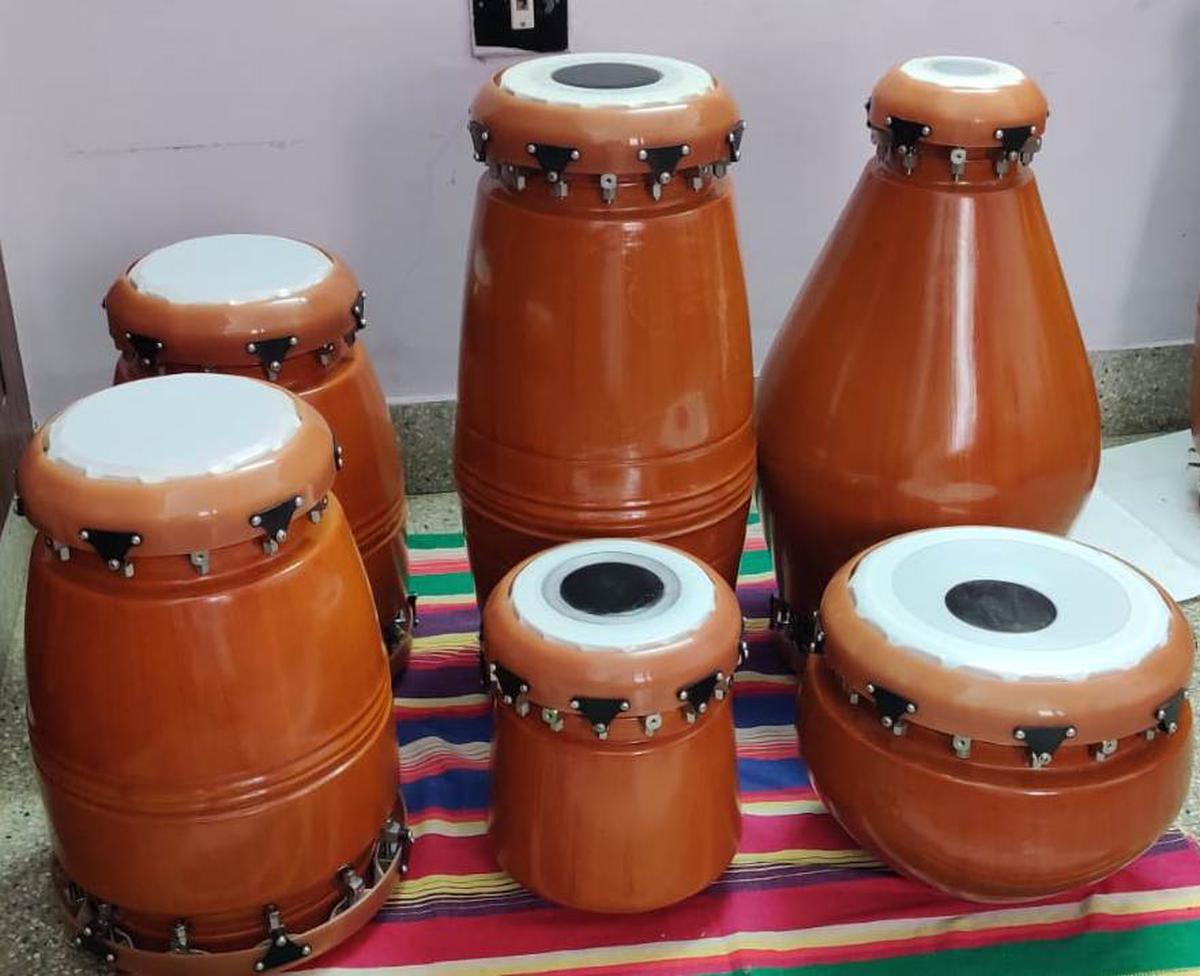
Karunya Musical’s vegan percussion instruments
| Photo Credit:
Special Arrangement
The traditional kanjira is made of jackfruit wood unto which a monitor lizard skin is stretched taut with coins inserted on the side to provide a jingle. Since monitor lizards are endangered, the German company Meinl makes kanjiras with goat skin head and a rubber wood frame. Vermont-based Cooperman’s kanjira uses a synthetic Mylar head and a hardwood shell. California-based Remo uses recycled wood fibre for its shell along with a completely synthetic head. In all of these modern versions, the tension of the playing head can be adjusted using a hex wrench. They are more durable, far less temperature sensitive and do not require periodic application of water whilst playing.
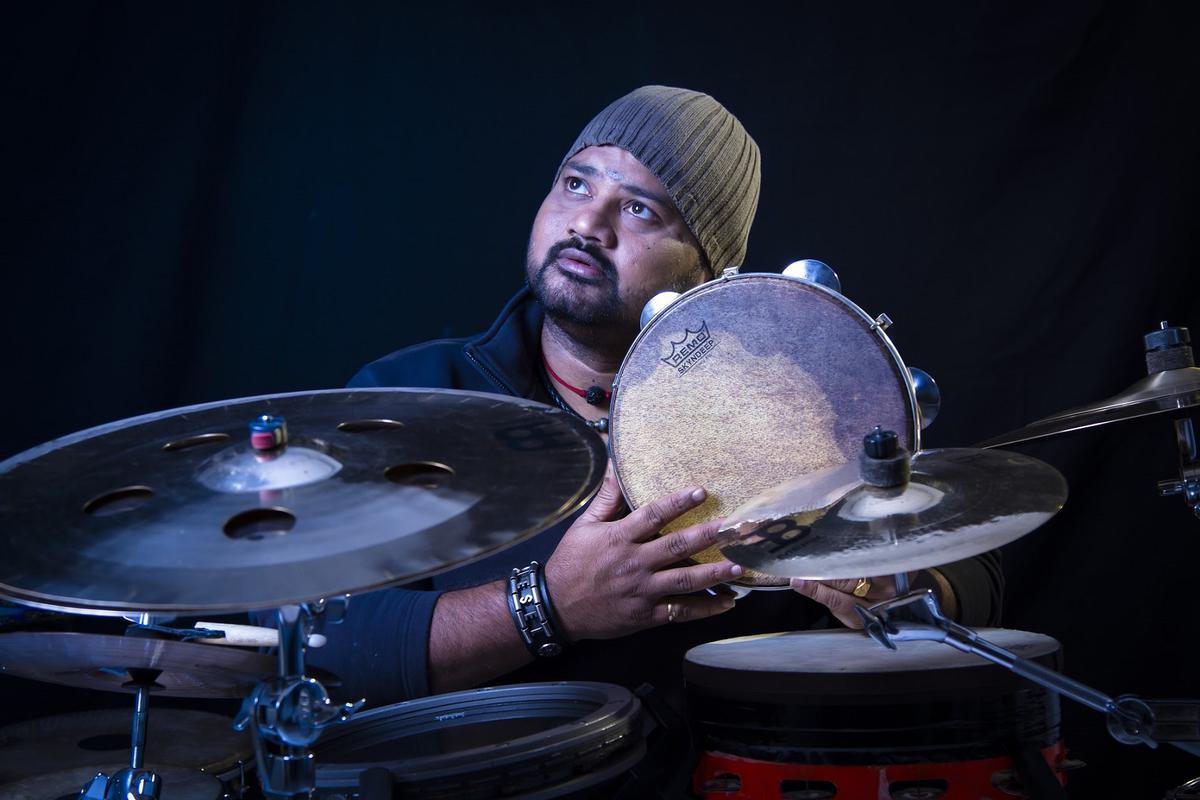
Selvaganesh playing the Remo kanjira
| Photo Credit:
Special Arrangement
Kanjira exponent K.V. Gopalakrishnan, also well-versed with newer versions, prefers the Remo kanjira. The Remo can be visually indistinguishable from the traditional instrument since the head is printed with a monitor lizard skin graphic. Some tonal differences can be discerned between the newer versions and the old, but a non-expert would be hard-pressed to identify them.
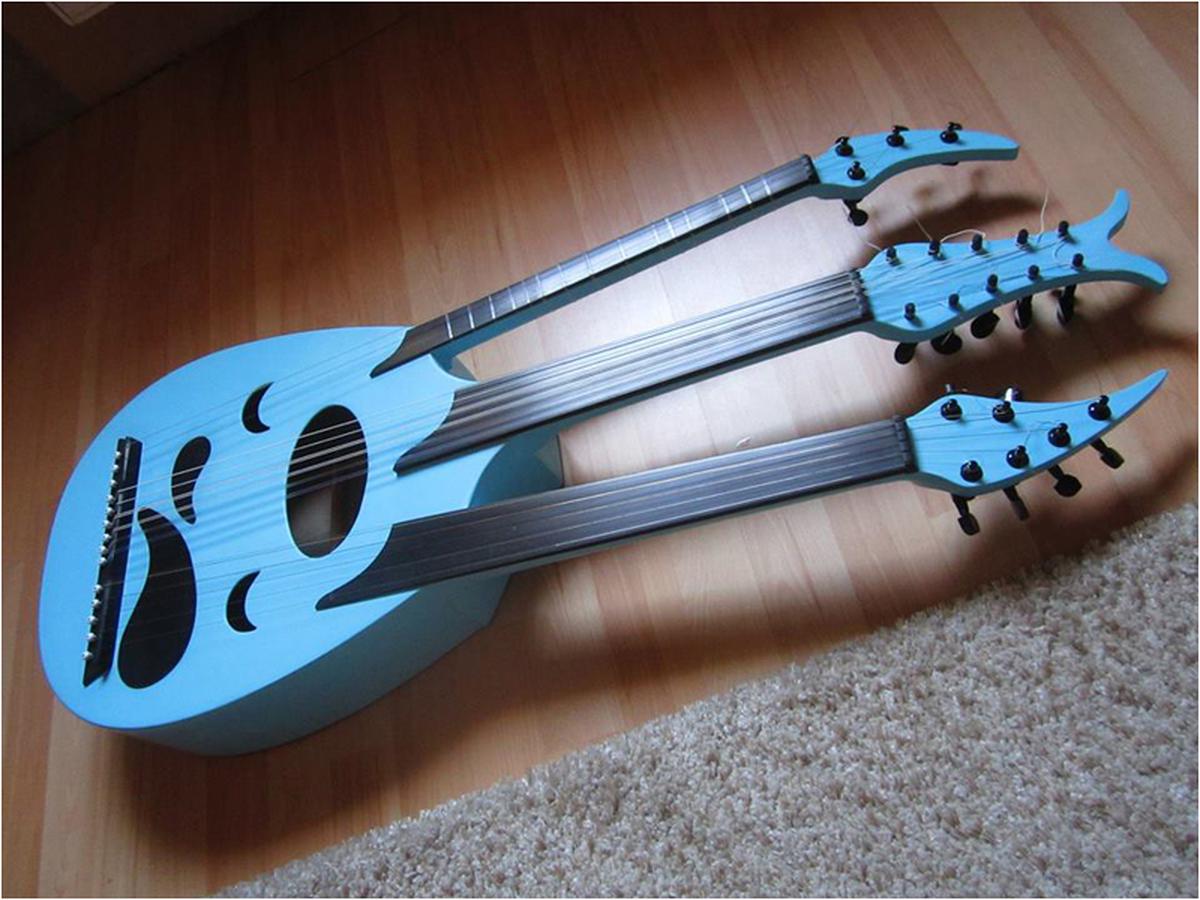
Mah-ze-tar by Edward Powell.
Traditional mridangams are jackfruit shells with caprine and bovine heads and straps, with a tonal black spot made of iron filings, manganese and cooked rice. Foreign tours exposed the instrument’s many frailties. The tonal spot would wear away and the entire instrument had to be dismantled to replace one head. Repairers were then available only in Chennai. An early idea, attributed to B. Ganapathy Raman, was having heads individually fastened with nuts and bolts, allowing for easy replacement and just one shell. It was quickly adopted, and is in regular use. While most are directly fastened at the head, Rohan Krishnamurthy, perhaps the first to patent this class of mridangams, has short nylon straps attached to metal prongs on the body, to make it sound closer to the traditional mridangam.
Instrument dimensions, however, change with sruti, necessitating additional instruments for different sruti ranges. Prapancham Ravindran thus designed one where the shell was in two detachable halves — one bass end and with two interchangeable tonal ends. Patri Satish Kumar added a third tonal end with his TRI-M version, covering the entire spectrum of srutis. While the shells above are split approximately in half, R. Akshay Ram configured it as 75:25 with three alternative tonal heads being 25%, thereby saving further space. Ravindra Bharathy Sridharan took the logical next step, a three-part mridangam with a central trunk and both ends detachable, christening it 3PM — also with three interchangeable tonal heads. Akshay Anantapadmanabhan came up with a ‘spotless’ mridangam — with the tonal black spot on the inside. He is yet to use it in Carnatic concerts. Akshay also uses the tonal head by itself at fusion shows — set upright like a bongo.
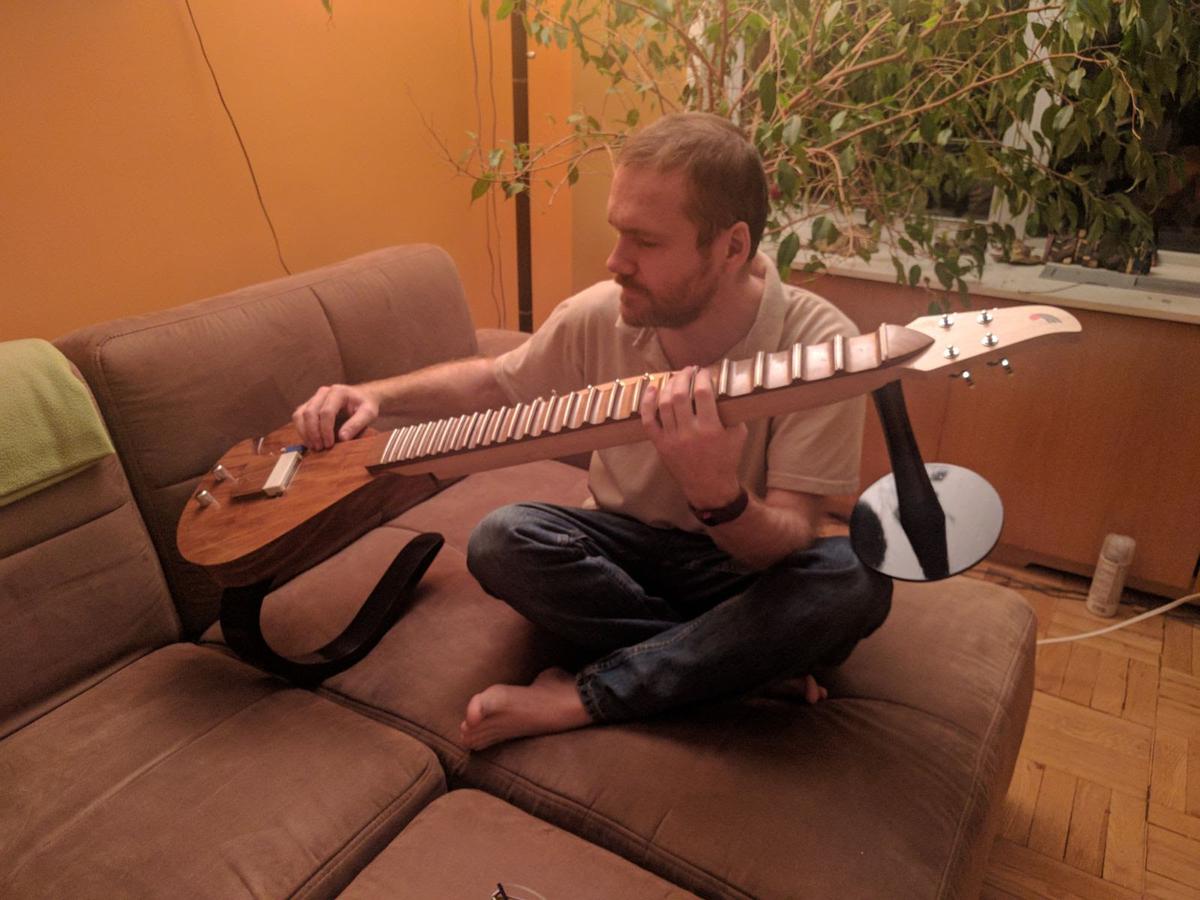
Denis Petrov playing the Shiva Veena.
While all these versions mostly use conventional materials, the SRI mridangam, designed by physicist and musician Dr. K. Varadarangan of Karunya Musicals, is made entirely of synthetic components. Vegan, it features a fibreglass shell, detachable polymer playing heads and chemically bonded resin for the black harmonic surface. The sruti, once set, is impervious to even extreme temperature and moisture changes. It requires no upkeep — not even rava for the base side. It can also straddle larger ranges of srutis — mridangist R. Ramkumar has successfully used a single mridangam for male and female srutis. The tabla, pakhawaj, dholak and other percussion instruments also reflect many of the innovations observed in the mridangam.
While the above innovations were on existing instruments, a bespoke luthier, Edward Powell, has created several never-before-seen eastern-inspired instruments. A Canadian musician based in the Czech Republic, his unique instruments include the Ragmakamtar — an oud, a sarod and a fretless guitar all in one, Mah-ze-tar (saz, oud and sarod), Rab (Afghan rabab and oud), a Mohan Veena and sarod hybrid, a Dzuddahord (guitar with adjustable sitar bridges, a mandola and sympathetic strings with harp-type tuning levers), customised tamburas, sarods, and sursringars.. Each instrument is planned and white-boarded scientifically to exact specifications.
The weights of legacy and heritage are significant restraints to innovations in traditional instruments.However, when improvements help resolve issues without compromising on the original feel or sound, or carve an entirely new niche, they, slowly but surely, take hold.
The writer is a Kalpalata Fellow for Classical Music Writings for 2023.
Stay connected with us on social media platform for instant update click here to join our Twitter, & Facebook
We are now on Telegram. Click here to join our channel (@TechiUpdate) and stay updated with the latest Technology headlines.
For all the latest Entertainment News Click Here
For the latest news and updates, follow us on Google News.
